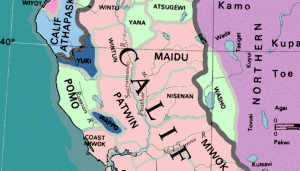Beaverton Oregon Important Phone Numbers
Here is a list of frequently called phone numbers for the City of Beaverton, Oregon. It also includes Washington County, State of Oregon, and US Government Contacts.
ANIMAL INFORMATION
Oregon Humane Society
503-285-7722 http://www.Oregonhumane.org
Washington County Animal Services
503-846—7041 http://www.co.washington.or.us/HHS/animalservices
CRISIS HOTLINES
Beaverton Multi-Service Center
833455-9090 http://www.oregon.gov/dhs
Domestic Violence Resource Center – Crisis Line
503-469-8620 (24 hours) http://www.dvrc-or.org
Oregon SafeNet
800-723-3638 http:://www.oregonsafenet.org
Oregon Poison Center
800-222-1222 http://www.ohsu.edu/poison
Sexual Assault Resource Center
503-640-5311 (24 hours) http://www.sacoregon.org
State Office of Child Services
503—681—6917 http://www.oregon.gov/dhs/children
Washington County Mental Health Services
503-846-4528 http://www.co.wushington.or.us/HHS/MentalHealth
ECONOMIC RESOURCES
Beaverton Area Chamber of Commerce
503-644-0123 http://www.beaverton.org
City of Beaverton Community and Economic Development Offices
503-526-2493 http://www.beavertonoregon.gov/departments/cdd
Westside Economic Alliance
503-968-3100 http://www.westside-alliunce.org
EMERGENCY AND COMMUNITY INFO
Police/Fire/Medical
911
Help Referral – Community Assistance
211 http://www.zoneinfo.org
Road & Travel Info – Oregon Department of Transportation
511 http://www.tripcheck.com
EMPLOYMENT
Worksource Oregon — Beaverton/Hillsboro
503-526-2700 http://www.worksourceoregon.org
Workforce Alliance PCC/ Washington County
971722-2713 http://www.workforceallianceonline.org
GENERAL INFORMATION AND RESOURCES
Beaverton Community Center
503-526-2565 http://www.beavertonoregon.gov/facilities.aspx
Beaverton Library
503-644-2197 http://www.beavertonlibrary.org
Better Business Bureau
503-212-3022 http://www.alaskaoregonwesternwashington.bbb.org
City of Beaverton Neighborhood Assoc.
503-526-2243 http://www.beavertonoregon.gov/departments/neighborhoods
Department of Environmental Quality
800-452-4011 http://www.oregon.gov/DEQ
Department of Motor Vehicles
503-299-9999 http://www.oregongov/odot/dmv
Disability, Aging, & Veteran Services
503-846-3060 http://www.co.washington.or.us/hhs/davs
Ecumenical Ministries of Oregon
503-221-1054 http://www.emoregon.org
Elsie Stuhr Senior Center
503-629-6342 http://www.thprd.org/fudlities/stuhr
METRO Recycling Hotline
503-234-3000 http://www.oregonmetro.gov/recycling
Social Security Administration
800-772-1213 http://www.ssa.gov
TriMet (Public Transportation)
503-238-RIDE (7433) http://www.trimet.org
Tualatin Hills Park & Recreation District
503-645-6433 http://www.thprd.org
United States Postal Service
800-275-8777 http://www.usps.com
GOVERNMENT
City of Beaverton
4755 Southwest Griffith Drive
Beaverton, OR 97005
503-526-2222 http://www.beavertonoregon.gov
Denny Doyle, Mayor
503-526-2497 mayormail@beavertonoregon.gov
Beaverton City Councilors
Cate Arnold, Council
President – Position 4
503-526-2508
Ian King — Position 1
503-526-2345
Betty Bode — Position 2
503-526-2347
Mark Fagin Position 3
503-526-2343
Marc San Soucie Position 5
503-526-2370
WASHINGTON COUNTY
155 North First Avenue, Suite 300
Hillsboro, OR 97124-3072
General Information: 503-846-8611
Administrative Office: 503-846-8685
http://www.co.washington.or.us
Washington County Board of Commissioners
Andy Duyck, Chair – At-Large
Dick Schouten — District 1
Greg Malinowski, Vice
Chair – District 2
Roy Rogers – District;
Bob Terry — District 4
Commission Main: 503-846-8681 http://www.co.washfngton.or.us/BOC
Metro Regional Government
600 NE Grand Avenue Portland, OR 97232—2736
Main: 503-797-1700 http://www.bluebook.state.or.us/
Metro Council
http://www.oregonmetro.gov/council
Tom Hughes — Metro Council President — 503-797-4889
Shirley Craddick — District 1 – 503-797-4547
Carlotta Collette — District 2 – 503-797-1337
Craig Dirksen District 3 – 503-797-1549
Kathryn Harrington – District 4 – 503-797-1553
Sam Chase District 5 – 503-797-4552
Bob Stacey — District 6 – 503-797-1546
STATE GOVERNMENT
http://www.oregon.gov
Oregon State Governor
Governorjohn Kitzhaber 503—378-4532
http://www.oregon.gov/gov/pages/index.aspx
Oregon State Representatives
http://www.Ieg.state.or.us/hhouse
Representative Tobias Read (D)
Beaverton — District: 27 503-936-4427 http://www.leg.stater.or.us/read
Representative Jeff Barker (D)
Aloha District: 28 503-986-1428
http://www.leg.stater.or.us/barker
Representative Chris Harker (D)
Beaverton — District: 34 503-626-8140
http://www.leg.stater.or.us/harker
Oregon State Senators
http://www.leg.state.or.us/senate
Senator Mark Hass (D)
Beaverton — District: 14 503-936-4714
http://www.leg.stater.or.us/hass
Senator Elizabeth Steiner Hayward (D)
NW Portland & Beaverton — District: 17 503-936-1717
http://www.leg.stater.or.us/steinerhayward
US GOVERNMENT
US House Representative
Rep. Suzanne Bonamici (D), OR lst District
503—326 —2901 http://www.bonumici.house.gov
US Senators
Senator Ron Wyden (D)
503-326-7525 http://www.wyden.senate.gov
Senator Jeff Merkley (D)
503-325-3386 http://www.merkley.senate.gov
PUBLIC SAFETY
Beaverton Police
Non—Emergency: 503-629-0111
Main: 503-526-2260 http://www.beavertonpolice.org
City of Beaverton Municipal Court
503-526-2290 http://www.beavertonoregon.gov/departments/court
Tualatin Valley Fire and Rescue
503-549-3577 http://www.tvfr.com
Washington County Sheriff
Sherriff Pat Garrett
Non—Emergency: 503-629-0111
Main: 503-846-2700
http://www.co.washington.or.us/sheriff
UTILITIES
Beaverton Garbage and Recycling
503-526-2665 http://www.beavertonoregon.gov/recycling
City of Beaverton Utilities
503-526-2257 http://www.beavertonoregon.gov
Clean Water Services
503-681-3600 http://www.cleanwaterservices.org
Comcast
800/266-2278 http://www.Comcast.com
Frontier
800-921-8101 http://www.Frontier.com
Metro Garbage and Recycling
503-234-3000 http://www.oregonmetro.gov/garbage
NW Natural Residential
800—422—4012 http://www.nwnatural.com
Portland General Electric
800-542-8818 http://www.portlandgeneral.com
Tualatin/Valley Water District
503-642-1511 http://www.tvwd.org
VISITORS ASSOCIATlONS
Washington County Visitors Association
503-644-5555 http://www.oregonswashingtoncounty.org

